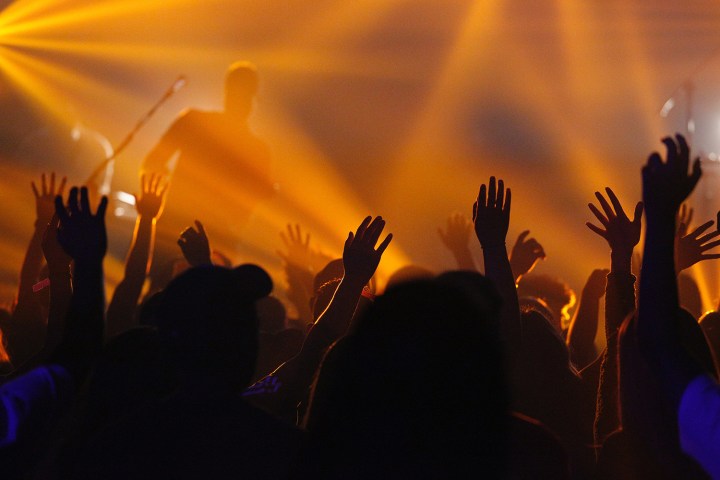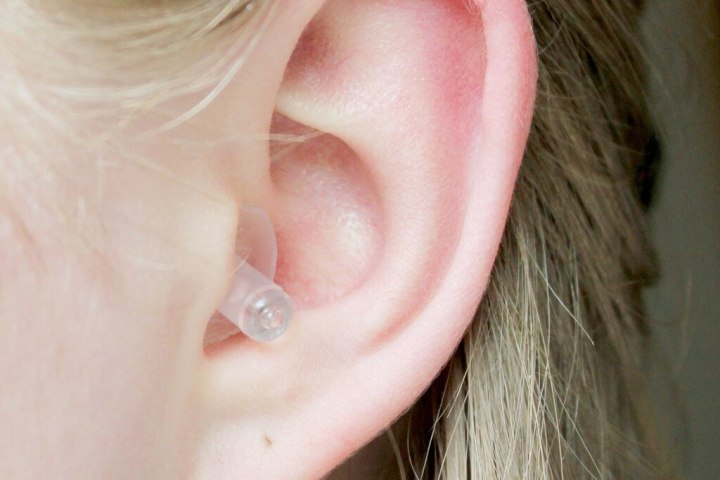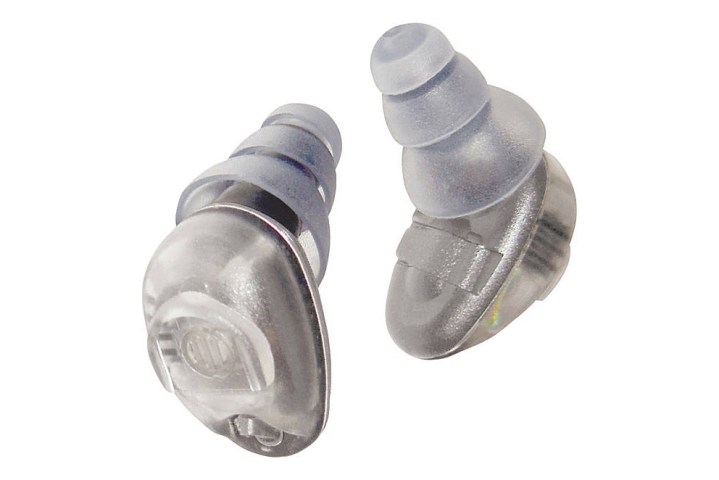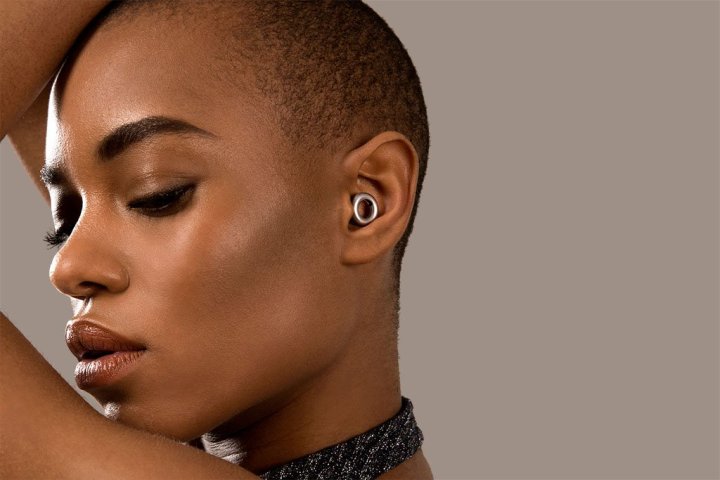
Ears are extraordinary organs. They’ve evolved over many millions of years to give voice to the vibrating world around us.
But like most parts of the human body, our ears aren’t built for the modern world. They’re designed to detect subtleties in speech and creatures in the night — not conversations over the din in a bar.
I’ll be honest, I subject my ears to a lot of stress. My exercise route takes me right alongside a busy boulevard, where my footsteps are accompanied by sounds of traffic — engines, rattling chassises, the audible ca-clunks of passing trucks. I’ve been known to eat an entire bag of pretzels while watching a movie, turning up the volume to compensate my chewing along the way. And most worryingly, I’ve logged over a hundred live music listening hours.
All that is to admit that I should do more to protect my ears. And I’m clearly not alone. Nearly a quarter of all American adults suffer from noise-induced hearing loss, according to a 2017 report by the Center for Disease Control.
Nearly a quarter of all American adults suffer from noise-induced hearing loss
The problem is that not all hazardous noises hurt. Noise pollution isn’t exactly painful but it’s been shown to have serious health consequences. (At 85 decibels, busy city traffic is safe to hear for about eight hours.) DIYers don’t always wear hearing protection while working with power tools but, at 98 decibels, a hand drill is safe for less than half an hour. And the auditory impact of live music is usually only noticed after the event, even though less than thirty minutes at an average concert (~100 dB) is enough to do irreversible damage.
In an effort to better care for my ears, I tried out a range of universal earplugs designed specifically for musicians and live music listeners, to see if I could make one of my favorite activities a bit less destructive to my future self. There are a few different approaches manufacturers take to attenuate dBs without distorting sounds. Here’s our non-exhaustive look at a few earplug options for live music.
A few things to know before buying music earplugs
First, if you’ve ever tried wearing normal foam earplugs at a concert, you know how much they can detract from the experience. Standard plugs are designed to block out as much sound as possible, making music sound muffled and flat as a result. Music earplugs differ from standard plugs in that they’re built to let in softer sounds while blocking louder sounds, in an effort to maintain the nuances in the music. While many professional musicians go with custom earplugs, we tried universal fits, which are more practical and affordable for the average listener.
Second, for earplugs to work properly, they have to fit right. That might mean changing out tips to find one that’s the right size or wiggling them around a bit to make sure they’re snug. Either way, if you wear earplugs in any setting, make sure you wear them right.
Third, be prepared to regularly clean your plugs to avoid irritation and infection.
Lastly, the Environmental Protection Agency requires that all earplugs include a Noise Reduction Ration (NRR), which represents the number of decibels (dB) that are reduced (or attenuated) when the plugs are worn properly. Since music earplugs are designed to let some frequencies in, many manufacturers consider the NRR to be “outdated” and less relevant for their products. For that reason, we dealt more specifically with the average number of dB attenuated at hazardous levels.
Alpine Hearing Protection

When it comes to discreet, affordable concert earplugs, it’s hard to beat the PartyPlug from Alpine Hearing Protection. The $17.50 plugs fit in the ear so snugly that the company provides a cylindrical tool to help fish them out. (It’s less difficult than it sounds, though it does take some getting used to.) They come in four colors — white, black, grey, and transparent — but, honestly, they’re so discreet that the colors will hardly ever be seen.
The PartyPlugs are good choice for the average concert and festival goer. They’re the most comfortable plugs I tested. Alpine boasts that they’re silicone-free, which they say make them less itchy and irritating to the ear. (Indeed, they didn’t itch or irritate, but neither did the other earplugs I tried.) The PartyPlugs come with a “one size fits all” tip that’s made out of a thermo-responsive material that shapes to the ear canal as it warms.
Once they burrowed into my ear canal, I struggled to get them out using my fingers alone.
But the greatest strength of the PartyPlugs is also its greatest weakness. With the tool handy, it’s easy — if a bit awkward — to get them out. But once they burrowed into my ear canal, I struggled to get them out using my fingers alone. The plugs come a hardshell carrying case, which the tool can attach to.
Inside the earplugs a small filter protects from up to 25 dB at some frequencies with slight distortion, since more decibels are attenuated at higher frequencies than lower ones.
As a step up from the PartyPlugs, Alpine offers the PartyPlug Pro Naturals, which boast higher dB protection and more balanced attenuation across frequencies without distorting sounds. At $39.95, the Pro Naturals come with a soft carrying case, cleaning spray, and flexible cord that tethers the two plugs together, making them easier to remove and hold on to, but more noticeable to wear. The cord also creates some residual sound effects as it bounces around and tugs on the plugs, which you might find distracting if you’re a heavy dancer.
Etymotic Research

Etymotic’s Music Pro Electronic Earplugs are for the music purist who doesn’t want to miss a beat, note, or chord while at a show, and doesn’t mind dropping a good bit of cash to make that happen. The $299 price tag is hard to swallow, but these earplugs aren’t meant for the average audience member. They’re a high-end product for active listeners who want to protect their hearing without missing out on the subtleties of live music and interspersed conversation. They come with seven interchangeable tips, a chord, ten batteries, cleaning tools, and a hardshell carrying case.
These earplugs aren’t meant for the average audience member.
Powered by small 1.45 vault batteries, the Music Pro has two modes that give wearers a bit of listening flexibility. The 9 dB automatic reduction mode enhances soft sounds by 6 dB and kicks in to decrease 9 dB when sounds are above safe levels. In the 15 dB mode, the earplugs cut 15 dB when sounds exceed safe levels. In both modes, the Music Pros don’t attenuate any dB as long as environmental sound are at safe levels. Changing between modes is as easy as flipping a switch on the side of the device. Battery life averages between seven and ten days, but make sure to open the battery port when not in use to save the juice.
Overall, the Music Pros are plugs that work best in dynamic environments, where volumes and sounds regularly change, and where you want to both chat and listen to the music. The Music Pros are not for most people but they’re good for those who live for live music, and for whom money isn’t an issue.
Etymotic also offers cheaper and more practical music earplugs, which aren’t electronic but do the job well. The ER 20xs ($24.95) are universal plugs that attenuate roughly 20 dB across frequencies. They’re comfortable to wear, relatively discreet, and easy to remove thanks to a little tag on the stem. They come with a soft case, interchangeable tips, and a chord.
Loop

Loops are like the fashionistas earplugs. Where the PartyPlugs are discreet and the Music Pros bring music to life, Loops standout as something of a fashion statement. They cost $29.95, come in eight colors (including rose gold, red, and black), with three different tips and a patent leather carrying case.
Loops standout as something of a fashion statement.
The circular shape of these 3D-printed earplugs are designed for more than just show. The hollow acoustic channel is meant to replicate the resonance of the ear canal. Since the ear canal plays such an important role in our hearing, the company insists that we lose the natural effect when we use earplugs. By adding an acoustic channel to the earplugs, Loop attempts to compensate for that loss.
It’s unclear whether that idea has any real world validity — I didn’t notice a difference — but the Loops are nonetheless a good pair of plugs. They’re easy to insert and remove, and once sound makes its way through the acoustic channel, it meets a mesh and fiber filter that attenuates about 20 dB across frequencies.
In it’s marketing material, the company writes, “Loop lets wearers avoid hearing loss without looking like a dork.” We don’t equate safety with dorkiness — hell, wear earmuffs if you have to — but we nonetheless respect their effort to make hearing protection more fashionable.


